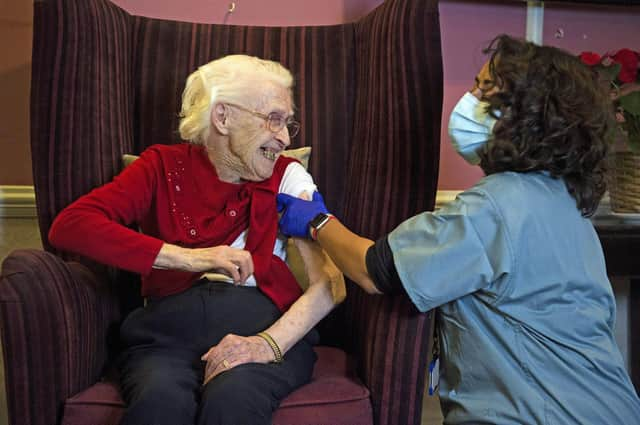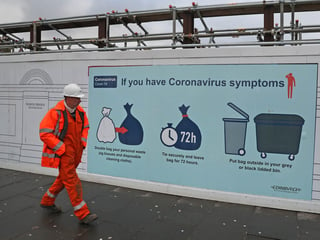Covid: How overseas holidays helped cause the second wave in Scotland – Professor Hugh Pennington


June was born in Glasgow in 1930, stayed in a Dennistoun tenement, left school at 16, and worked in the Royal Infirmary’s pathology laboratory. She moved to Canada where she researched cancer viruses and became an electron microscopist before doing her pioneering coronavirus work in 1966 at St Thomas's Hospital Medical School. She died in 2007.
For many years thereafter, coronaviruses generated little interest. After all, they were only common causes of the common cold. But in 2002 Sars (severe acute respiratory syndrome) emerged in China. It spread to 29 countries causing 8,442 cases and 774 deaths before being controlled.
Advertisement
Hide AdAdvertisement
Hide AdIts case fatality rate was 11 per cent, much greater than Covid-19. The last recorded community transmission was in 2003, and the virus has not been seen since. Another coronavirus, Mers (Middle East respiratory syndrome), which occurs naturally in camels, appeared in 2012. It has a human case-fatality rate greater than 30 per cent.
Sars left two important memories. Far East countries were much better prepared for Covid-19 than Europe, the Indian subcontinent or the Americas. And it caused much embarrassment for China, which for three months tried to cover up its existence. But scientists, co-ordinated by the World Health Organisation, characterised the virus that had spread to other countries and found them out.
On 26 December 2019, Dr Jixian Zhang noticed four unusual cases of pneumonia at in a Hubei hospital. Three similar cases were found the next day. Case-finding started in Wuhan on 30 December, and a patient with the unusual pneumonia had samples taken from deep in the lungs. Had Sars returned?
The samples were coronavirus positive, but genome sequencing showed it was not Sars, but a new coronavirus related to one in bats. It caused pneumonia in transgenic mice and rhesus monkeys. The virus genome sequence was published on 12 January on the Global Initiative on Sharing All Influenza Data website. The WHO declared a pandemic on March 11 2020. The rest is history.
Covid-19 is a disease of the elderly. The increase in likelihood of developing a severe and lethal infection as age increases is more marked than with any other infectious agent. During the pandemic’s first wave in Scotland, 77 per cent of the deaths were of people aged 75 or over. A century ago only about five per cent of Scotland’s population was aged 65 or older. It is now 19 per cent.
Care homes are in essence a modern phenomenon and Covid-19 is a modern disease. If it had appeared 40 years ago, it would probably have passed unnoticed. Even today a significant number of cases of pneumonia suffer and die without a microbial cause being established.
Covid-19 is not only modern because there are many more people susceptible to its malignant effects but because the science on which diagnosis and policymaking rest is also quite modern.
The oldest relevant technology is the electron microscope, developed in the 1940s by Nobel Prize-winner Ernst Ruska in Germany. The reverse transcriptase enzyme necessary for converting the virus RNA to DNA as part of the test for Covid was discovered in the 1970s by Nobel Prize-winners David Baltimore and Howard Temin at the Massachusetts Institute of Technology and Wisconsin University.
Advertisement
Hide AdAdvertisement
Hide AdThe polymerase chain reaction for amplifying DNA and making tiny amounts detectable was developed by another Nobel laureate Kary Mullis at the Cetus Corporation in California in the 1980s. Nucleic-acid sequencing was pioneered by Frederick Sanger, who won two Nobels, over many years at Cambridge. And CT scanning (essential as a diagnostic tool to detect the characteristic Covid ground-glass lung opacity) was developed in the 1960s and 70s by Geoffrey Hounsfield (Nobel Prize for Physiology or Medicine,1979) at the EMI Central Research Laboratories in London.
Without genome sequencing it would not be possible to establish the origin of virus strains or detect mutations. This has been made possible by the availability of sequencing machines and a dramatic drop in costs, which started to fall like a stone in 2008, falls greatly outpacing Moore's law for computer chips.
The Covid-19 Genomics UK Consortium has been busy. They have shown that Scottish first-wave viruses came from England (50 per cent), Europe (24 per cent) and Wales, Asia and North America (eight per cent). Glasgow exported lots of strains to Tayside and England. Many strains died out during the first lockdown. Second-wave viruses were by and large not first-wave survivors but new imports, many from countries outside the UK. A price has been paid for summer holidays abroad.
The new variant is causing a lot of concern to policymakers. Epidemiological evidence shows that it has become common in tandem with more frequent transmission of the virus.
Without volunteer studies (which would be dangerous and unethical) it is not possible to directly test the hypothesis of a definitive link, or accurately estimate the effect of colder weather, Christmas gatherings and "lockdown fatigue" on transmission rates. Policymakers have adopted the precautionary principle – better safe than sorry even if fears eventually turn out to be unjustified. Paradoxically from the Brexit point of view, this principle is regularly extolled by the EU.
From a virological point of view, it would be expected that changes in transmissibility would also lead to changes in virulence. It has happened in a coronavirus that causes a devastating disease in neonatal piglets. The hot virus causes high-mortality gastroenteritis. The variant, which has multiple mutations in the spike protein, causes a milder illness and is less transmissible. Perhaps irrelevant for humans, but a reminder that not all mutants are Frankensteinian.
Hugh Pennington is emeritus professor of bacteriology at the University of Aberdeen
A message from the Editor:
Thank you for reading this article. We're more reliant on your support than ever as the shift in consumer habits brought about by coronavirus impacts our advertisers.
If you haven't already, please consider supporting our trusted, fact-checked journalism by taking out a digital subscription.
Comments
Want to join the conversation? Please or to comment on this article.
